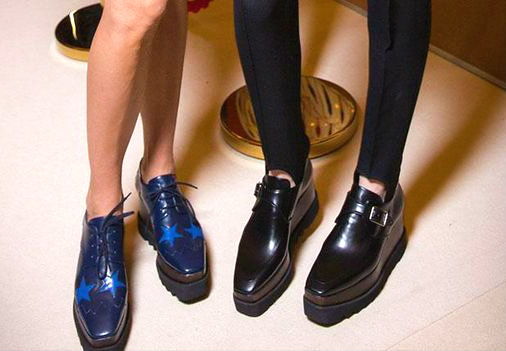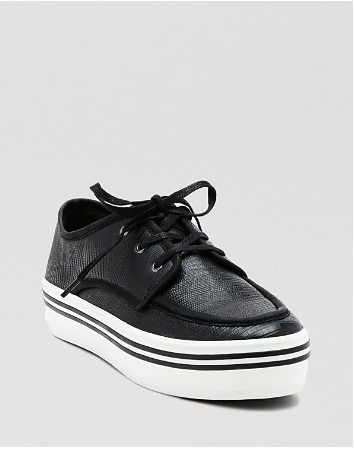This article originally appeared on Fashionista.com, a trusted source of fashion news, criticism and career advice with a monthly readership of more than 2.5 million. This articles explains the need to go eco in fashion and why you should avoid polyester at all costs. A real eye opener!
No one wants to eat a meal laced with plastic, but if something doesn’t change in our current textile economy, that could soon be a reality. Plastic microfibers, which are like tiny pieces of plastic lint that come off synthetic clothing in the washing machine, are now entering the oceans at a rate of about half a million tons every year — that’s equivalent to more than 50 billion plastic bottles. Once in the water, these microfibers are ingested by aquatic wildlife and travel up the food chain where they end up being consumed by humans.
This problem is just one of many highlighted in a new report from the Ellen MacArthur Foundation. Entitled “A New Textiles Economy: Redesigning Fashion’s Future,” the 150-page report has garnered support from brands like Stella McCartney, Nike and H&M in addition to the United Nations and nonprofits like the Sustainable Apparel Coalition and the C&A Foundation.
“This report is an important step in signaling the type of systemic innovation and collaboration required to unlock a future that protects… the planet while also powering sustainable business growth,” says Nike vice president of sustainable business and innovation Cyrus Wadia in the report’s introduction.
According to the report, Wadia is right to note the connection between business growth and planet care. While the detriment to the earth is staggering in and of itself, the fact that over “$500 billion of value is lost every year due to clothing underutilization and the lack of recycling” should be enough to make other businesses take note of the report’s findings.
Besides overviewing the microfiber issue, the report also touches on a range of other matters that need to be addressed if the fashion industry is to avoid “catastrophic outcomes.” Among these issues are the reduction of carbon emissions in the textile sector, which currently equals that of all international flights and shipping combined. At its current rate, fashion is projected to be using 26 percent of the planet’s carbon budget by 2050.
Another problem is related to clothing’s growing disposability. The report notes that the steady increase in global fashion production is linked to a decreased use of individual pieces, with some garments being thrown out after only seven to 10 wears. Considering that less than one percent of clothing is recycled, that’s a huge problem — and has led to a scenario in which “one garbage truck full of textiles is landfilled or burnt every second.” If this trajectory continues, the weight of our discarded clothing would be more than ten times that of the world’s current population by 2050.
It looks pretty bleak if the textile industry continues with business as usual, but the report doesn’t end in pessimism. Instead, it offers a vision of change that could lead to systemic shifts that go beyond the individualized good deeds of a few ethical brands here or there.
The solution offered by the report can be broken down into four steps. First, it involves phasing out hazardous substances, and reducing microfiber release through new technologies and better production processes. Second, the report suggests transforming how clothing is designed, sold and used so that disposability is reduced. This might involve placing a bigger emphasis on clothing rental programs or designing and better marketing more durable garments.
The third part of the solution involves recycling: encouraging brands to design garments that are easy to recycle, setting up large-scale clothing collection and pursuing technological advancements that will make recycling more possible. Lastly, the report suggests that any non-recycled material that enters the fashion cycle should come from renewable sources (like algae or bamboo) rather than nonrenewable ones (like fossil fuels).
Reforming the fashion industry so thoroughly will be a difficult task, but the report makes clear that it’s the only option for human and environmental flourishing — and maybe even survival.
“It is obvious that the current fashion system is failing both the environment and us,” writes member of Denmark’s Parliament Ida Auken in the introduction to the report. “This report sets out a compelling vision of an industry that is not only creative and innovative, but also circular… Whilst this may not be straightforward, the way is now clear.”
Read the full report here.



